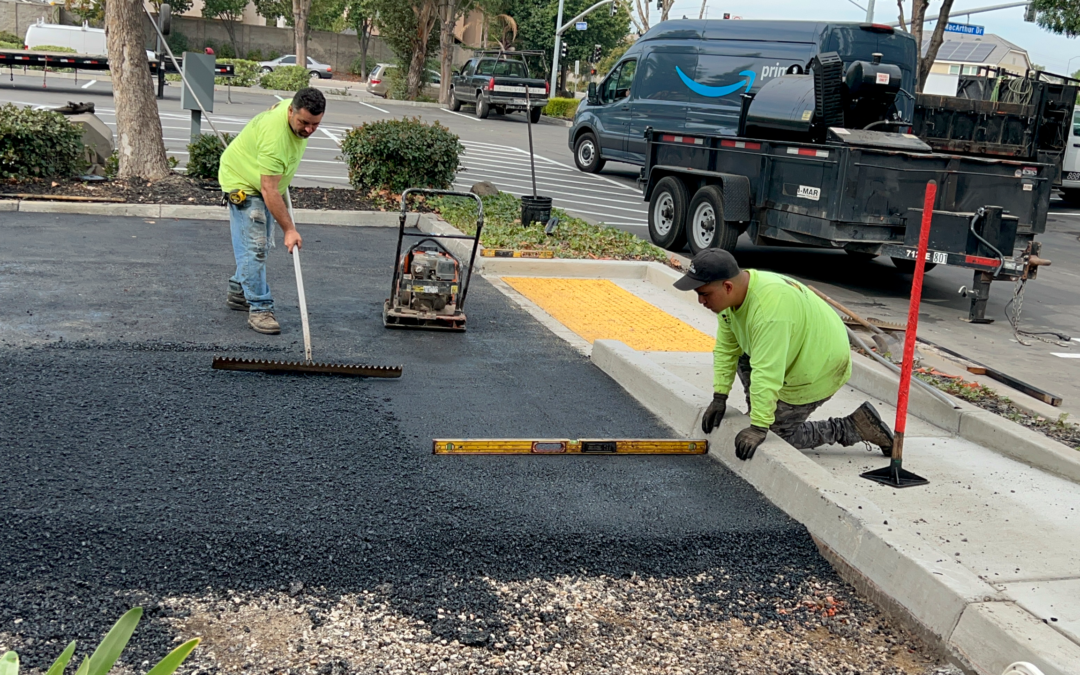Asphalt paving is a critical component of many construction projects, from residential driveways to major highways. One of the most important considerations for project managers and homeowners alike is understanding how much asphalt can be laid in a day. This not only impacts the timeline of a project but also its overall cost and logistical planning. In this comprehensive guide, we will delve into the factors that influence asphalt paving productivity, with a particular focus on the unique conditions and considerations in Sacramento, California.
Understanding Asphalt Paving Productivity
The amount of asphalt that can be laid in a day depends on several key factors, including:
- Type of Project
- Residential Driveways: Smaller-scale projects such as residential driveways typically see lower daily production rates compared to larger commercial or public projects.
- Roads and Highways: Larger projects benefit from economies of scale, allowing for higher daily production rates.
- Crew Size and Equipment
- Crew Size: The number of workers on a paving crew can significantly impact productivity. A larger, well-coordinated crew can accomplish more in a day.
- Equipment: The availability and condition of paving equipment, such as pavers, rollers, and trucks, play a crucial role in the amount of asphalt that can be laid.
- Weather Conditions
- Temperature: Asphalt must be laid at certain temperatures to ensure proper compaction and durability. Extreme heat or cold can slow down or halt operations.
- Rainfall: Rain can cause delays in paving, as wet conditions can affect the quality of the asphalt surface.
- Site Preparation
- Proper site preparation, including grading and base work, is essential for efficient asphalt laying. Inadequate preparation can lead to delays and reduced productivity.
- Type of Asphalt
- Different types of asphalt, such as Hot Mix Asphalt (HMA) and Warm Mix Asphalt (WMA), have varying workability and compaction requirements, affecting the pace of laying.
Asphalt Paving Productivity in Sacramento, California
Sacramento presents unique conditions and challenges for asphalt paving. Here are some specific considerations for this region:
- Climate
- Temperature: Sacramento experiences hot summers with temperatures often exceeding 90°F. This can impact the workability of asphalt and require crews to start early in the morning or work late into the evening to avoid the peak heat.
- Rainfall: While Sacramento has a relatively dry climate, the rainy season typically occurs from November to March. This can limit paving operations during these months.
- Regulations and Standards
- Sacramento adheres to California state regulations and standards for asphalt paving. This includes environmental regulations aimed at reducing emissions and promoting sustainability, such as the use of Warm Mix Asphalt (WMA).
- Traffic Management
- In urban areas like Sacramento, managing traffic flow during paving operations is crucial. Proper planning and coordination with local authorities can help minimize disruptions and maintain productivity.
Typical Productivity Rates
On average, a professional asphalt paving crew can lay between 2,000 to 4,000 square yards of asphalt in a day for larger projects like roads and highways. For smaller projects like residential driveways, the daily output may range from 1,000 to 2,000 square yards. These figures can vary based on the factors mentioned earlier.
Case Study: Paving a Residential Driveway in Sacramento
Let’s consider a hypothetical case study of paving a residential driveway in Sacramento to illustrate the productivity rates and considerations:
- Project Scope
- A standard residential driveway of approximately 2,000 square feet.
- Crew Size and Equipment
- A crew of 5 workers with a paver, roller, and 2 trucks.
- Weather Conditions
- Paving scheduled for early summer to avoid the peak heat.
- Site Preparation
- Proper grading and base work completed prior to asphalt laying.
- Type of Asphalt
- Hot Mix Asphalt (HMA) chosen for its durability and performance in Sacramento’s climate.
Given these conditions, the crew can efficiently lay the asphalt within a single day, ensuring proper compaction and a high-quality finish.
Tips for Maximizing Asphalt Paving Productivity
- Plan Ahead
- Schedule paving operations during favorable weather conditions to avoid delays and ensure optimal asphalt performance.
- Invest in Quality Equipment
- Maintain and upgrade paving equipment to ensure efficient and reliable operations.
- Coordinate with Local Authorities
- Work closely with local authorities to manage traffic and obtain necessary permits, minimizing disruptions and delays.
- Hire Experienced Contractors
- Choose contractors with a proven track record in asphalt paving to ensure high productivity and quality workmanship.
- Regular Maintenance
- Regularly maintain paved surfaces to extend their lifespan and avoid costly repairs. This includes sealing cracks and addressing minor damages promptly.
Conclusion
Understanding how much asphalt can be laid in a day is essential for effective project planning and execution. In Sacramento, factors such as climate, regulations, and traffic management play a significant role in determining asphalt paving productivity. By considering these factors and implementing best practices, you can ensure a successful asphalt paving project that meets your timeline and quality expectations.

